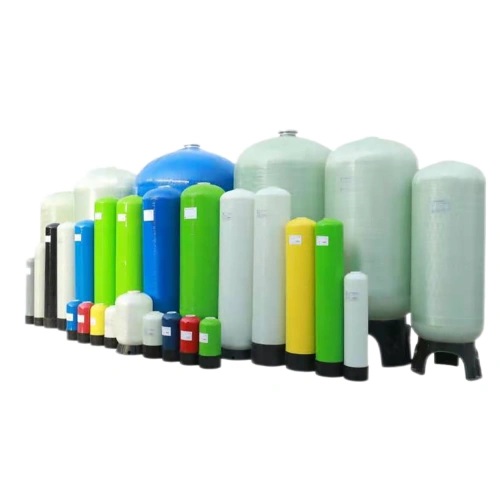
The Role of Fiberglass Tanks in Wastewater Treatment
Fiberglass tanks play a pivotal role in wastewater treatment, serving as essential components of modern wastewater management systems. Introduced to the industry in the late 1940s as a robust and corrosion-resistant alternative to traditional materials like steel and iron, fiberglass has become widely used due to its durability, light weight, and low maintenance requirements. These properties have led to its application in diverse applications, including wastewater collection tanks, dosing tanks, surge tanks, and sedimentation tanks, highlighting the importance of fiberglass in improving the efficiency and reliability of wastewater treatment facilities.
The growing appreciation for fiberglass tanks stems from their significant advantages, such as resistance to harsh chemicals and extreme environmental conditions—a common characteristic in wastewater treatment. Their design allows for effective management of corrosive substances while ensuring compliance with stringent industry standards set by organizations such as the American Water Works Association (AWWA) and the National Sanitation Foundation (NSF). In addition, fiberglass tanks offer an economical solution over time, as their durability reduces maintenance needs and extends their lifespan compared to traditional materials.
Types of Fiberglass Tanks
Fiberglass tanks are used in a variety of applications within the wastewater treatment industry, offering a range of designs tailored to specific operational requirements. These tanks are primarily classified based on their function, shape, and the nature of the liquid they store or treat.
Wastewater Collection Tanks
Fiberglass tanks serve as efficient underground containers for collecting and treating wastewater. These tanks are typically circular or cylindrical in shape, making them ideal for handling the highly corrosive conditions of wastewater environments. Their waterproof design ensures efficient wastewater retention while separating solids, similar to conventional sewage systems.
Dosing Tanks
Dosing tanks are a crucial component of wastewater management systems, designed to store and deliver precise quantities of wastewater to treatment facilities or drainage fields. Fiberglass dosing tanks can be customized to meet specific dosing requirements and are often designed with various accessories, such as baffles, to enhance their functionality.
Sudden Flow Tanks
Sudden flow tanks are designed to accommodate fluctuations in wastewater flow, acting as a buffer to maintain consistent treatment rates. The lightweight yet durable fiberglass makes these tanks ideally suited for this purpose, as they can withstand varying flow pressures without the risk of structural failure.
Sedimentation Tanks
Fiberglass sedimentation tanks are used to separate solids from liquids through sedimentation. Their design allows for efficient sedimentation and is often enhanced with customized features to meet specific operational needs, such as various tank shapes and sizes to optimize flow patterns.
Sewage Tanks
Fiberglass septic tanks are a popular choice for residential wastewater management. These tanks offer efficient solid waste retention and liquid treatment, and their corrosion resistance makes them suitable for various soil types. Additionally, their lightweight design facilitates easier transport and installation compared to traditional concrete options.
Read also: A Guide to Choosing the Ideal Chemical Tank
Advantages of Fiberglass Tanks
Fiberglass tanks offer several advantages that make them an ideal choice for wastewater treatment applications.
Unmatched Durability
One of the most prominent features of fiberglass tanks is their exceptional durability. They are constructed from high-strength fiberglass embedded in a robust resin matrix, providing high structural integrity while maintaining a lightweight design. Their resistance to corrosion and abrasion makes them suitable for harsh environments where traditional materials might fail.
Lightweight and Easy to Install
Fiberglass tanks are significantly lighter than their concrete counterparts, simplifying installation and reducing the need for heavy machinery. This lightness not only facilitates transportation but also lowers installation costs, allowing for rapid installation in various wastewater treatment environments.
Corrosion Resistance
Fiberglass exhibits remarkable corrosion resistance, which is crucial in wastewater treatment where exposure to harsh chemicals is common. Unlike steel and iron, which are highly susceptible to corrosion, fiberglass can withstand prolonged exposure to corrosive materials without deteriorating. This resistance helps ensure the longevity of tanks and reduces the risk of leaks and structural failures.
Low Maintenance Requirements
Fiberglass tanks are designed to require minimal maintenance. Their watertight construction eliminates the need for frequent inspections and repairs associated with conventional tanks that require on-site sealing of joints. While some maintenance is still necessary, such as reapplying UV-resistant coatings and periodic inspections, these tanks generally require significantly less upkeep than alternatives like concrete or metal tanks.
Customizable Design
Fiberglass tanks can be customized to meet specific storage needs and are available in various shapes and sizes, including cylindrical, rectangular, and vertical designs. This customization allows facilities to optimize their storage solutions based on available space and operational requirements.
Compliance with Standards
Fiberglass tanks are designed to meet stringent industry standards, including those set by organizations such as the parent company.
The Water Works Waterway (AWWA) and the National Sanitation Foundation (NSF) are certified. This compliance ensures the safe use of fiberglass tanks for water and wastewater storage, enhancing their appeal to operators in the wastewater treatment sector.
Installation and Maintenance
Fiberglass Tank Installation
Installing fiberglass tanks at wastewater treatment plants requires careful consideration of several factors to ensure optimal performance and longevity. Fiberglass reinforced plastic (FRP) tanks are lightweight and robust, making them easier to maneuver and install compared to traditional materials. Proper site preparation and adherence to installation guidelines are crucial to preventing future problems such as leaks or structural failures. Furthermore, collaboration between engineers, contractors, and the maintenance team is essential for efficient installations that meet industry standards.
Read more about FRP tank installation and mounting instructions
Maintenance Practices
Regular maintenance is critical for the durability and effectiveness of fiberglass tanks in wastewater treatment. Although fiberglass tanks (FRP) are known for their low maintenance requirements, proper maintenance is essential. However, they still require periodic inspections and maintenance to ensure their longevity.
- Periodic Inspections: Regularly checking for signs of corrosion, damage, or leaks is crucial. Inspections should focus on welds and joints, which are common points of potential failure.
- Cleaning Protocols: Keeping tanks clean prevents the buildup of deposits that can affect performance and lifespan. This may involve using appropriate cleaning agents that won’t damage the tank material.
- Repairs and Upgrades: Addressing any identified problems promptly is critical to avoid costly damage. For example, faulty valves or fittings may need to be upgraded or replaced to prevent leaks or operational interruptions.
- UV Coating Maintenance: Many fiberglass tanks are coated with UV-resistant materials. These may need to be reapplied over time to maintain their protective properties against environmental exposure.
By implementing a comprehensive maintenance program that incorporates these practices, facilities can significantly extend the life of their fiberglass tanks and reduce operational risks associated with corrosion and material degradation.


























